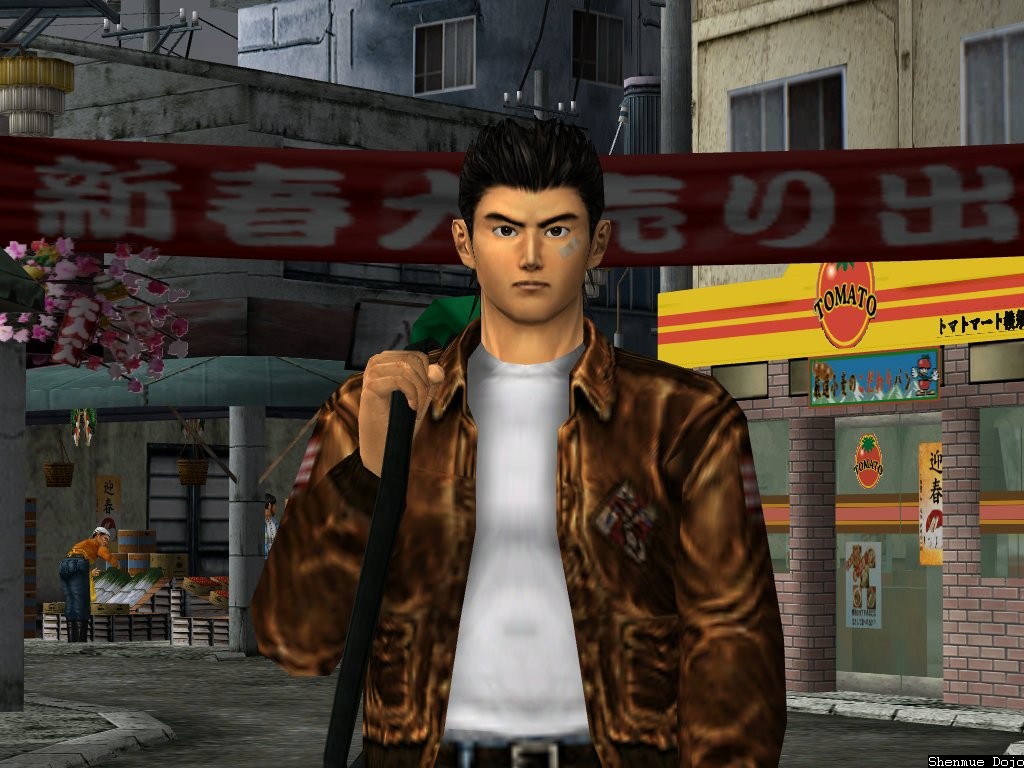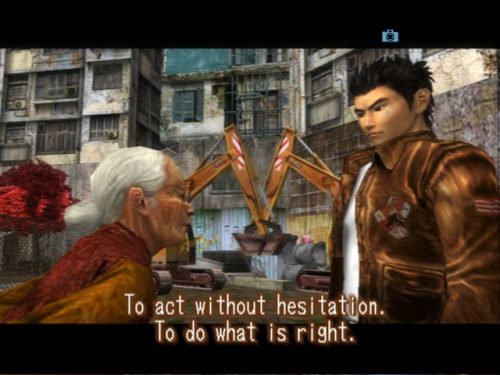On Saturday, February 22nd, 2014, the PlayStation 4
finally came out in Japan, and I waited anxiously by the door for the delivery
man to appear with my deceptively heavy package and extra fire-red controller
so that I could begin setup of my new toy. But it didn’t come on Saturday. In
fact, it only shipped on Saturday, it wouldn’t arrive until the next day at the
earliest, and, assuming bad weather or Godzilla related turbulence, Tuesday at
the latest. Luckily, it arrived on Sunday morning, because Japan does not
believe in weekends for their UPS equivalent, much to my heartfelt joy.
THE SYSTEM
 It’s tiny – much, much tinier than I initially thought it
would be – and solid. It feels like a good piece of hardware and the
strange-but-interesting parallelogram shape of the case looks nice, even though
the shape is such that, unless you already have your standing systems on the
left side of your TV/media center (which I do not), it will look rather awkward
with the rest of them. After a few minutes deliberation, I decided to
re-organize so that I could lie it down on its side.
It’s tiny – much, much tinier than I initially thought it
would be – and solid. It feels like a good piece of hardware and the
strange-but-interesting parallelogram shape of the case looks nice, even though
the shape is such that, unless you already have your standing systems on the
left side of your TV/media center (which I do not), it will look rather awkward
with the rest of them. After a few minutes deliberation, I decided to
re-organize so that I could lie it down on its side.
I also discovered that one unfortunate aspect is that there
are no rear USB ports, meaning that if you’re like me and bought a cradle for
your two controllers, unless you have them hooked up to a different USB source,
you’re going to have a cable coming out of the front of your PS4 at all times.
After making room for it and getting it hooked up, I turned
it on and went through the initialization (choosing a language – which the Japanese Wii
U absolutely does not allow – and
internet connection, etc.) and got to the home screen before turning it off,
unplugging it, and setting it on my work table to begin replacing the HDD.
And it was so easy. It was a breeze snapping off the
case, unscrewing 5 screws, changing drives, re-screwing 5 screws, and
re-snapping on the case. It took 5 minutes. Of course, with a new HDD, you have
to have a thumbdrive with the latest firmware ready to re-install, but that’s
no problem, either. From there, it took maybe 20 minutes to get through that,
back through initialization, and to the home screen for the second time.
THE CONTROLLER
All the while, I was admiring the new DualShock 4. I’ve been
a fan of all of the DualShocks (even though the original controller was a little too small,
if still comfortable, and the SixAxis was too light, if similarly shaped), but
this one is by far my favorite. It might even be my favorite controller, ever. I
don’t have particularly big or small hands, and had no problems whatsoever with
the DualShock 3, but this one feels good. The buttons are crisp and springy,
the triggers are improved, and the reintroduction of the dimpled analog sticks
make this the best incarnation thus far. The handles are more rounded than the
previous versions which do make it look
a lot bigger, but, in fact, it has the exact same footprint as the DualShock 3.
At least, eyeballing it, they do.
I will say, among all that, it is jarring not to have a
Start button, anymore. This is my first controller ever without one. That’s 25
years, or more, of gaming with a Start button in, generally, the same place
(the original XBOX and XBOX S controllers notwithstanding). I keep wanting to
reach over to pause Resogun or Outlast and accidentally brush the new
little touchpad, instead. But, really, that’s okay. I’ll get used to it. The
functions of the Start button have simply been moved to the new Options button
in the shortstop position between the Triangle and Square buttons.
One other interesting thing is the big bright light on the back of the controller. It is there to show whose controller is whose, assuming you have a bunch of same-color controllers, and to work with the PlayStation Eye, but, mainly, it's there to be bright. While playing Outlast with the lights off near 11 pm, every now and then I'd notice a little light toward the bottom-left of the TV that I initially thought was in the game, a collectible item or something, that I finally discovered was that light. It's so bright that it reflects off the screen in the dark, unfortunately distractingly so. It's not a huge problem, but being able to turn it down or off is something that will hopefully be addressed in a future update. The controller also has, like the original Wii Remotes, a surprisingly clear speaker in it that sometimes shouts instructions at you or adds ambient noises at odd times. I'm withholding judgment as to whether it's necessary or not, but I'm willing to give it the opportunity to wow me.
One other interesting thing is the big bright light on the back of the controller. It is there to show whose controller is whose, assuming you have a bunch of same-color controllers, and to work with the PlayStation Eye, but, mainly, it's there to be bright. While playing Outlast with the lights off near 11 pm, every now and then I'd notice a little light toward the bottom-left of the TV that I initially thought was in the game, a collectible item or something, that I finally discovered was that light. It's so bright that it reflects off the screen in the dark, unfortunately distractingly so. It's not a huge problem, but being able to turn it down or off is something that will hopefully be addressed in a future update. The controller also has, like the original Wii Remotes, a surprisingly clear speaker in it that sometimes shouts instructions at you or adds ambient noises at odd times. I'm withholding judgment as to whether it's necessary or not, but I'm willing to give it the opportunity to wow me.
PS VITA CONNECTIVITY
 I’m including this because the Vita is essentially my 3rd
controller now. Of course, I’d never choose the Vita over the classic
DualShock as a plain controller, but the Remote Play and 2nd Screen
functionality are so… awesome, that I
have to seriously consider it. Remote Play is flawless, quick, and I was able
to fail spectacularly at Resogun on a
high difficulty just as I would have with the DualShock on the TV screen
(although the L2/R2 really need physical buttons to be perfect). I haven’t been able to test the 2nd screen, yet,
but it’s on my list of things I want to try.
I’m including this because the Vita is essentially my 3rd
controller now. Of course, I’d never choose the Vita over the classic
DualShock as a plain controller, but the Remote Play and 2nd Screen
functionality are so… awesome, that I
have to seriously consider it. Remote Play is flawless, quick, and I was able
to fail spectacularly at Resogun on a
high difficulty just as I would have with the DualShock on the TV screen
(although the L2/R2 really need physical buttons to be perfect). I haven’t been able to test the 2nd screen, yet,
but it’s on my list of things I want to try.
The Vita is finally going to become useful for more than my
PS One classics, and for that I’m very excited.
OTHER
I’m not going to cover any games in this, but I will say of
the ones I’ve played (Resogun, Knack, Outlast, Contrast, and Don’t Starve) that they are gorgeous. But, I have to say that I
don’t believe these are experiences I couldn’t have had on the PS3, with the
exception of Knack – Knack is quite technically impressive.
 The automatic shut-off also appears to actually work on the
PS4, as having fallen asleep with it on last night and waking up to find it in
standby mode will attest. Too many times, I would leave the PS3 on, hoping that
it would finish its download, install, and then turn itself off only to find
that it’s been on all day or all weekend, wasting my expensive Japanese
electricity (and believe me, that’s no pittance).
The automatic shut-off also appears to actually work on the
PS4, as having fallen asleep with it on last night and waking up to find it in
standby mode will attest. Too many times, I would leave the PS3 on, hoping that
it would finish its download, install, and then turn itself off only to find
that it’s been on all day or all weekend, wasting my expensive Japanese
electricity (and believe me, that’s no pittance).
The PSN looks good, even though it’s currently bare, and
it’s drastically quicker to get to
the store from the home screen, which is amazing. I used to have to wait up to
2 or 3 minutes for the store to open on the PS3, but now it’s practically
instantaneous. I even accidentally went into the store once or twice and didn’t
realize I’d done it, but it was so quick it was of no consequence.
However, that is one thing that is both good and bad: the
PS4 home screen and the PSN are identical.
It can sometimes be difficult to distinguish exactly where you are because,
even outside of the store, some of the advertised games have price tags. For
example, I got a free copy of the Japanese Knack
with my PS4 and, after going into the Japanese PSN to get it downloading,
logged into my other American account to look around and saw Knack’s download progress on the screen,
but it also had a BUY NOW $59.99 underneath it, which, at first, was rather
confusing. But as soon as the game finished downloading (35 GBs, good lord), the price tag, even in the American account,
disappeared.
However, the PS4 is a classy, high quality addition to any
media center. Now we need some console-defining game experiences to
arrive. I can’t wait.




























